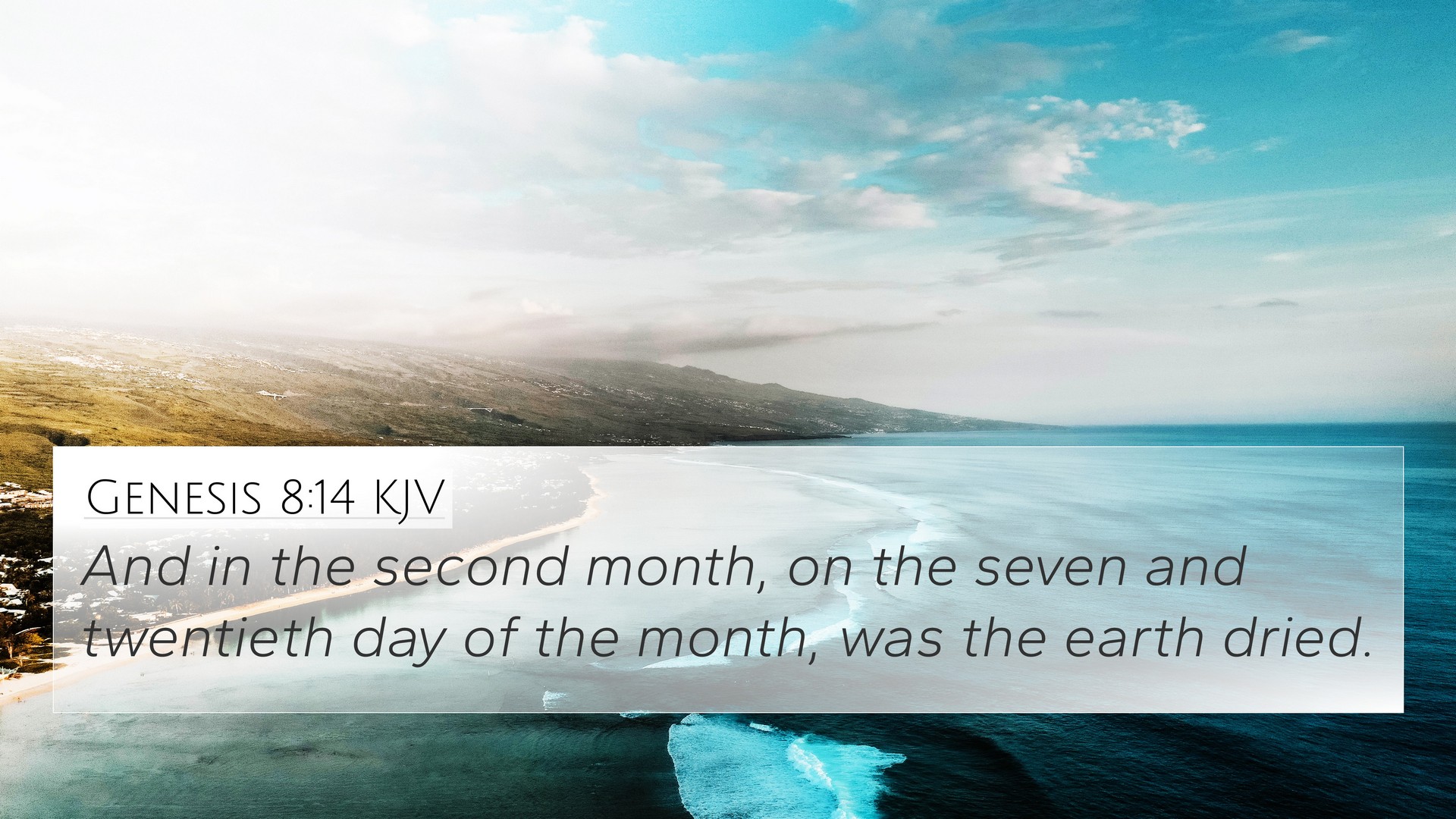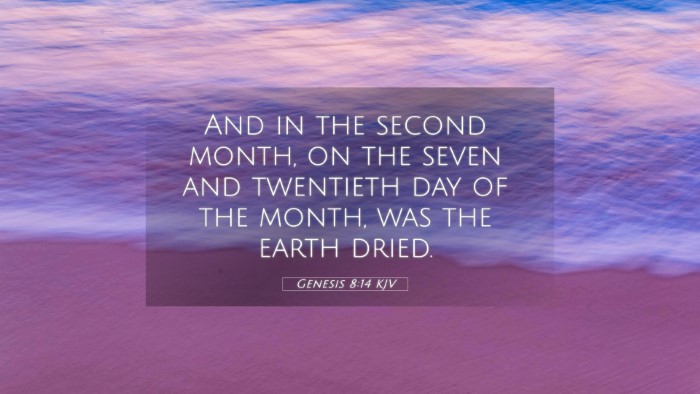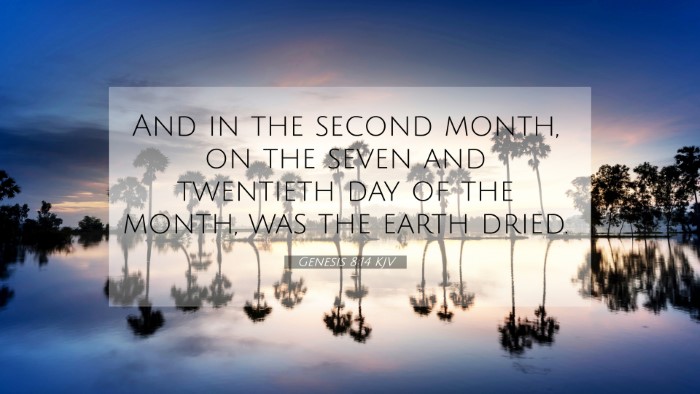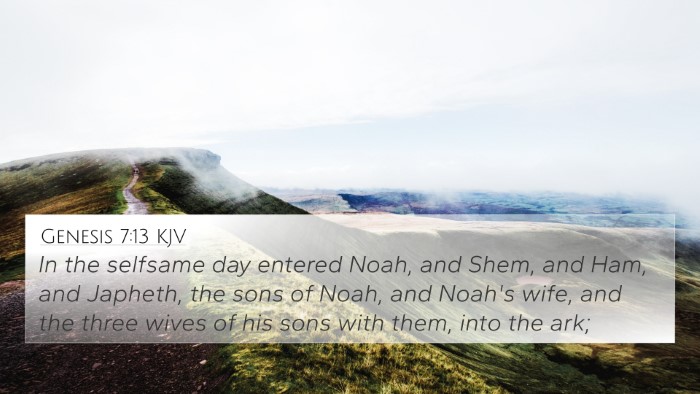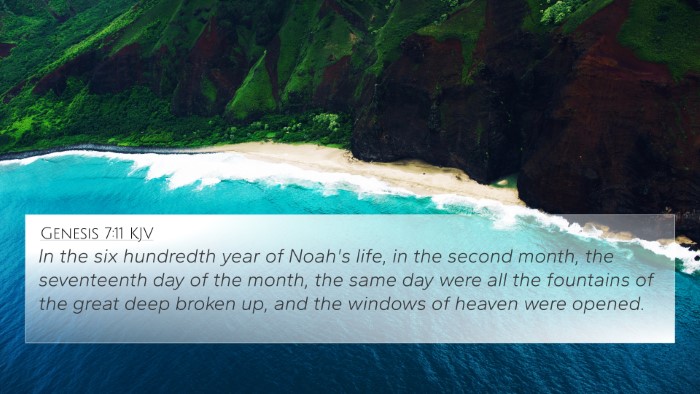Understanding Genesis 8:14
Genesis 8:14: "And in the second month, on the seven and twentieth day of the month, was the earth dried." This verse marks the conclusion of the Flood narrative, emphasizing God's sovereignty over creation and His faithfulness to His covenant.
Summary of Interpretations
This verse has been interpreted in various ways by notable commentaries, including insights from Matthew Henry, Albert Barnes, and Adam Clarke.
Matthew Henry's Commentary
God's Timing: Matthew Henry emphasizes that the drying of the earth occurred in God's appointed time, showcasing the divine orchestration of events. God patiently works towards His purposes, and His timing is perfect.
Albert Barnes' Commentary
Symbolism of Renewal: Albert Barnes notes that the drying of the earth symbolizes a new beginning for humanity post-Flood. It reflects God's mercy, allowing life to flourish once again after judgement.
Adam Clarke's Commentary
Historical Context: Adam Clarke provides historical insights, mentioning the significance of the timeline in this verse. The specific mention of the second month and the twenty-seventh day demonstrates a structured approach to recounting God's actions.
Key Themes and Insights
- Covenant and Promise: This verse underscores God's faithfulness to His promises, as seen throughout Scripture.
- Judgment and Restoration: It illustrates the transition from divine judgment (the Flood) to restoration and renewal after calamity.
- Faithfulness of God: The delayed drying of the earth teaches patience and trust in God's plan, resonating with themes seen in other biblical texts.
Cross-References
Genesis 8:14 is interconnected with several other verses that provide deeper insights and thematic connections:
- Genesis 9:8-17: God establishes His covenant with Noah, promising never to destroy the earth by flood again.
- Isaiah 54:9-10: God recalls His covenant with Noah as a symbol of His enduring mercy.
- 2 Peter 3:5-7: References the Flood as a foreshadowing of future judgment, linking God's past actions to future promises.
- Psalms 104:29-30: Reflects on God's power in creation, including His control over the waters.
- Romans 8:21: Speaks of creation being liberated from the bondage of decay, akin to the restoration seen in Genesis 8.
- Revelation 21:1: Points to a new creation and the end of former things, paralleling themes of renewal.
- Matthew 24:37-39: Jesus references the days of Noah, emphasizing the coming judgment and the urgency of faith.
Connections Between Bible Verses
This verse's connections with various biblical texts illustrate the overarching narrative of scripture and God's relationship with humanity:
- Thematic Bible Verse Connections: The flood as divine judgment is a theme echoed throughout both Testaments, highlighting the balance between justice and mercy.
- Bible Verses that Relate to Each Other: The post-Flood narrative in Genesis aligns with prophetic writings (e.g., Isaiah) regarding God's covenant and mercy.
Tools for Understanding Biblical Texts
To delve deeper into the connections in Genesis 8:14 and enhance your biblical study, consider utilizing:
- Bible Concordance: A tool that aids in finding verses by keywords, allowing exploration of themes and connections.
- Bible Cross-Reference Guide: Useful for tracking related verses and understanding cross-referenced themes.
- Cross-reference Bible Study: Methods to systematically explore scripture's interconnectedness.
Conclusion
Genesis 8:14 stands as a pivotal moment in the biblical narrative. By examining the insights from various commentaries and its cross-references, we can better understand the thematic connections and the broader implications of God's promise and faithfulness throughout scripture. Engaging with these tools and resources will enrich one's study of the Bible and enhance the understanding of its divine message.
